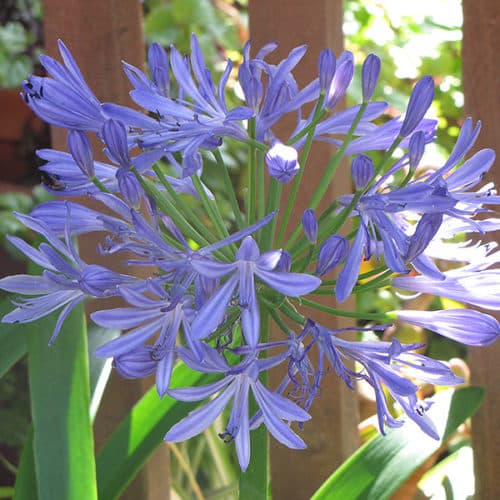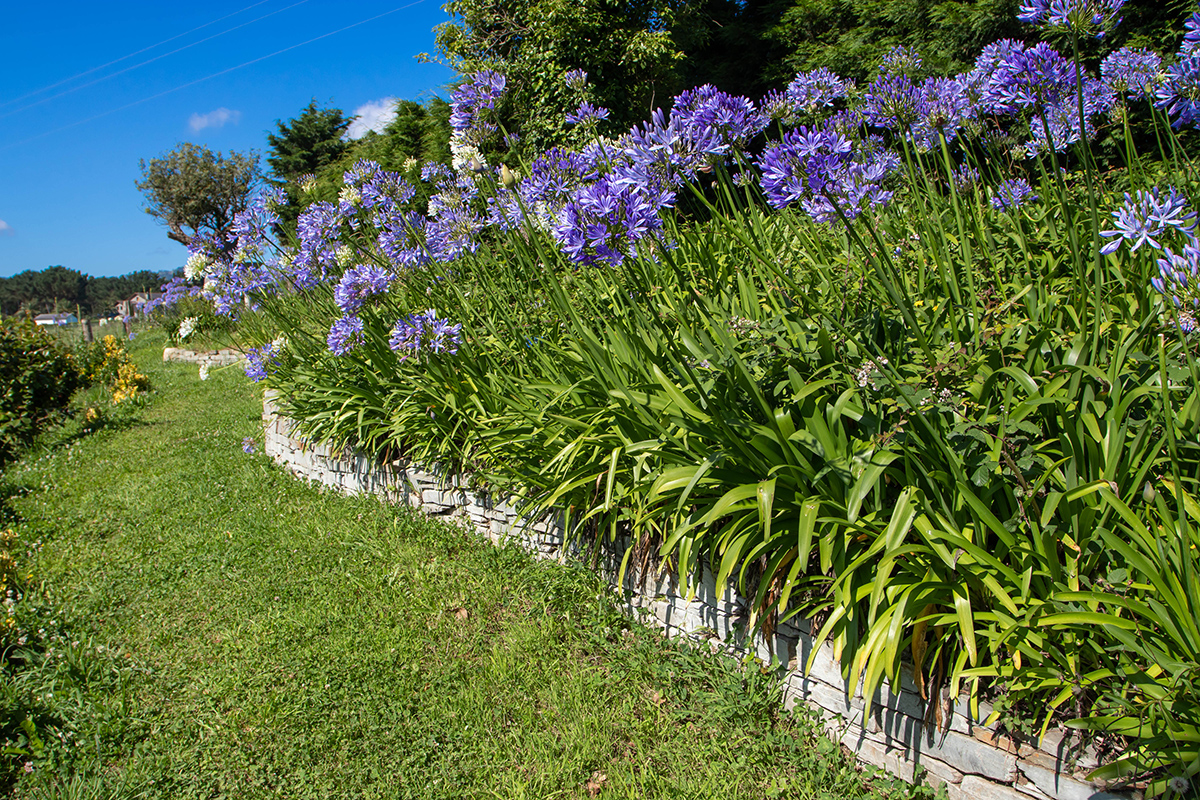Just how to Plant and Maintain Agapanthus in Your Yard
Just how to Plant and Maintain Agapanthus in Your Yard
Blog Article
Letting Loose the Secret to Effective Agapanthus Cultivation: Tips and Techniques for a Flourishing Garden
In the world of gardening, growing agapanthus efficiently needs a tactical strategy that includes numerous aspects of plant treatment. By comprehending the subtleties of agapanthus growing, one can develop an atmosphere where these plants grow and flower perfectly.
Growing Agapanthus: Best Practices
When growing Agapanthus, appropriate dirt prep work is vital for ensuring successful growth and growth of these lovely blossoms. Agapanthus, typically called Lily of the Nile or African lily, flourishes in well-draining dirt with a slightly acidic to neutral pH level - Agapanthus. Prior to planting, it is crucial to modify hefty clay soils with raw material such as compost or peat moss to improve water drainage and supply vital nutrients for the plants
To grow Agapanthus, choose an area that obtains full sunlight to partial color, as this will certainly advertise healthy development and bountiful flowering. Dig a hole two times the size of the plant's origin ball and place the Agapanthus at the very same depth it was formerly expanding. Delicately backfill the hole with soil, weighing down firmly to eliminate any air pockets around the roots.
Water the recently planted Agapanthus extensively and proceed to maintain the dirt uniformly moist, particularly during the plant's energetic expanding period. Agapanthus. Using a well balanced fertilizer once a month can additionally sustain the plant's development and blooming. By adhering to these ideal techniques for planting Agapanthus, you can produce a sensational screen of these exciting flowers in your garden
Suitable Dirt Conditions for Agapanthus
For ideal growth and flowering success of Agapanthus plants, making sure the soil conditions are excellent is vital. Agapanthus flourishes in well-draining dirt with a somewhat acidic to neutral pH degree ranging from 6.0 to 7.0. This sort of soil permits ample water drain, preventing waterlogging which can cause root rot. To improve dirt drain, think about including organic matter such as garden compost or peat moss when preparing the growing site. Furthermore, Agapanthus chooses soil that is rich in nutrients, so incorporating a balanced fertilizer during the growing season can advertise healthy and balanced development and dynamic flowers.

Watering and Fertilizing Tips
To make certain healthy development and vibrant flowers, correct watering and fertilizing techniques are vital for effective Agapanthus farming. Agapanthus plants benefit from routine watering, specifically throughout the expanding season.
When it involves feeding Agapanthus, a well balanced fertilizer with equivalent parts nitrogen, phosphorus, and potassium can be used in the spring to advertise healthy and balanced growth and flowering. Slow-release Full Report plant foods are ideal for offering nutrients progressively over an extended period. Stay clear of over-fertilizing, as this can bring about extreme foliage growth at the cost of blossoms.
Additionally, including raw material like compost right into the dirt can improve nutrient levels and enhance dirt framework, helping in the overall health and wellness of the Agapanthus plants. By following these watering and fertilizing ideas, garden enthusiasts can guarantee their Agapanthus plants thrive and produce sensational display screens of flowers.
Trimming and Deadheading Strategies
Correct trimming and deadheading methods play an important role in keeping the health and appearances of Agapanthus plants, matching the vital practices of watering and fertilizing for effective cultivation. Trimming Agapanthus includes getting rid of spent flower heads, yellowing or dead fallen leaves, and total shaping of the plant to promote better development. Deadheading, the procedure of getting rid of discolored flowers, not only boosts the plant's appearance but likewise urges more flowering.
When deadheading Agapanthus, it is advisable to clip off the flower stem at the base using sharp, clean shears. This procedure redirects the plant's energy from seed manufacturing back right into origin and foliage growth, promoting a much healthier and a lot more durable plant. Regular deadheading can prolong the flowering period of Agapanthus and avoid self-seeding, which can lead to congestion.
In regards to pruning, Agapanthus normally advantages from a light trim after blossoming to tidy up the plant and encourage fresh development. Cutting down the spent blossom stems and removing any dead or damaged vegetation assists keep the plant's vitality and overall appearance. Nevertheless, it is necessary to avoid cutting into the crown of the plant, as this can damage its health.

Protecting Agapanthus From Vermins and Diseases
Implementing reliable insect and condition monitoring methods is vital to safeguarding the health and wellness and vigor of Agapanthus plants in growing. Agapanthus are typically hardy plants, but they can still fall sufferer to different bugs and diseases otherwise correctly taken explanation care of. One typical insect that influences Agapanthus is the Agapanthus borer, a caterpillar that passages into the plant, causing damages to the flowers and leaves. To avoid invasions, routine examination of the plants is vital. If borers are identified, they can be by hand removed, or insecticidal soap can be utilized as a control step.
In addition to parasites, Agapanthus are prone to conditions such as root rot and fungal fallen leave spots. By staying watchful and attending to parasite and condition problems without delay, garden enthusiasts can assist their Agapanthus flourish and prosper.

Verdict
Finally, effective cultivation of agapanthus calls for appropriate planting strategies, suitable soil conditions, sufficient watering and fertilizing, normal pruning and deadheading, and protection from illness and pests. By following these suggestions and techniques, garden enthusiasts can ensure a prospering garden loaded with beautiful agapanthus flowers. Agapanthus. Remember to preserve regular care and interest to detail to advertise the health and longevity of these sensational plants
When growing Agapanthus, appropriate soil prep work is essential for guaranteeing effective growth and advancement of these attractive blossoms.Water the freshly grown Agapanthus completely and continue to keep the soil equally damp, the original source particularly during the plant's active expanding period.For ideal growth and blooming success of Agapanthus plants, making certain the dirt problems are excellent is critical. When hair transplanting or growing Agapanthus, make sure the soil is well-prepared to give the necessary foundation for the plants to establish themselves effectively. One typical insect that impacts Agapanthus is the Agapanthus borer, a caterpillar that passages right into the plant, causing damages to the leaves and blossoms.
Report this page